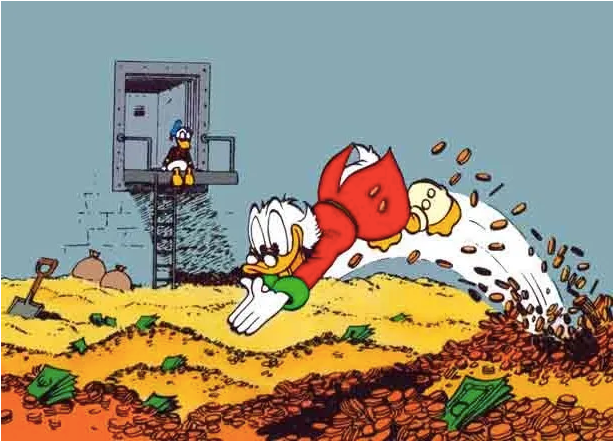Stop the presses: Tomorrow is Election Day. Who you vote for matters. It will affect your life and your childrens’ lives in the near- and longterm. The winner will control a vast nuclear arsenal.
We’re talking about the mayor’s race of course. Is San Francisco’s mayoral race top of mind for you? If so: What’s wrong with you? (Okay, the mayor can’t deploy weapons of mass destruction. Except for that one time. Sorry, Livermore.)
Some 71 percent of San Franciscans in 2022 voted for Supervisor Dean Preston’s Proposition H, which pushed the 2023 mayoral election to this year. The rationale was simple: In the three prior odd-year municipal elections, the turnout was, respectively 42 percent, 45 percent and 29 percent. And in the three prior even-year municipal elections, coinciding with presidential and/or gubernatorial contests, turnout was 86 percent, 74 percent and 81 percent.
It’s very hard to argue that our most consequential elections shouldn’t be timed to maximize turnout (as Prop. H opponents discovered). You may recall Mayor London Breed in 2022 claiming Prop. H was a “power grab” orchestrated by the city’s far left. This was a statement that was ridiculous in the moment and has continued to grow more ludicrous with every passing moment and million-dollar give in the most expensive city mayoral race of all-time.
The notion that enabling vastly more people to vote in a free and fair election was, somehow, a “power grab” — let alone one benefitting a cadre of extreme leftists — is the sort of claim you’d expect to be espoused on conspiracy podcasts sponsored by miracle diet supplements. It was never a mystery who would be the true beneficiaries of moving mayoral elections to presidential years. We wrote who it would be in 2022. We did it again in January 2024. It ain’t the far left.
To the contrary — it’s wealthy candidates. Or candidates with access to wealth. There are a number of reasons for this, but the first one is the most obvious: Math.
 A left-wing power grab, eh?
A left-wing power grab, eh?
Simple math at that. There are presently some 521,000 registered voters in San Francisco. In previous mayoral races, around 40 to 50 percent of them would be heading to the polls. This year, at least 80 percent of voters are going to show up. There’s a delta here of perhaps 200,000 voters or more. You’ve got to reach these low-information voters — who are also the most difficult voters to reach.
That costs money.
The political mailers that you could use to wallpaper three or four rooms in your home? Postage for those runs 38 cents apiece. If it costs campaigns 80 cents to dollar to design, print and send those mailers — and they have to send out up to 200,000 more in every batch to reach the voters — those costs add up. It might be more expensive than mailing people actual wallpaper, come to think of it.
So when the math shows that an independent expenditure committee supporting Daniel Lurie has spent more on postage stamps than the committee supporting Aaron Peskin has raised, period — that’s what’s going on. This doesn’t exactly scream left-wing power grab — unless, when the polls close at 8 p.m. tomorrow, Lurie rips off his mask, Scooby-Doo style, and it turns out he’s Dean Preston. We’re reasonably certain that won’t happen.
The assumption that a bigger turnout naturally favors progressive candidates is just that — an assumption. If the top issues are public safety and homeless encampments and hiring cops, cops, cops, these are not progressive candidates’ favored subjects. Preston, by the way, has been adamant that he just wanted more people to vote — and “that is a good thing no matter what the results are.” It remains challenging to argue against this.
And yet, his legislation transformed how mayors are elected in this city. Shifting the mayoral race to a presidential cycle, it turns out, completely altered the winning formula. No longer is this a turnout race in which candidates target their likely voters and/or community influencers and successfully cajole them into voting. This year, every voter is a likely voter. Every voter is voting. So this is a 100 percent persuasion and visibility race.
Instead of microtargeting the right people, campaigns need to reach everyone. And how do they do that? Via electoral carpet-bombing: Ads on every platform. Direct mail on top of direct mail. Paid canvassers. You’re not going to believe this, but, once again, this favors candidates with wealth or access to it.
Paid canvassers are a luxury most campaigns can’t afford. And volunteers are harder and harder to come by. An appreciable percentage of this city’s unionized workforce is walking precincts in Nevada or Wisconsin for Kamala Harris instead of back in San Francisco for their endorsed mayoral candidate. Same goes for the high-level volunteers of the sort every mayoral campaign needs; Reno must be lousy with San Francisco volunteers by now.
That’s an additional hurdle for candidates without access to fabulous wealth or a dodgy ballot-measure committee enabling them to commingle expenses and sidestep San Francisco’s $500 contribution limit. As is the fact that the $500 contribution limit dates back to — wait for it — 1973. Gasoline cost 39 cents a gallon in 1973. You could buy a Ford Mustang convertible for around $3,100 brand new. To put things in context, 500 bucks in 1973 had the same buying power as $3,700 today.
But for San Francisco candidates raising money the conventional way, $500 remains the limit in 2024. Unless, of course, they can write themselves seven-figure checks or receive six-figure gives to their independent expenditure campaigns.
Daniel Lurie, of course, can do both.
 Mayoral hopeful Daniel Lurie with a dog at Mishka Dog Boutique at 2124 Union St. Photo by Xueer Lu. August 21, 2024.
Mayoral hopeful Daniel Lurie with a dog at Mishka Dog Boutique at 2124 Union St. Photo by Xueer Lu. August 21, 2024.
Does that mean Lurie is guilty, as his opponents charge, of buying the mayoral race? Yes and no. In politics, as in life, it’s better to be rich and famous than poor and unknown. But California’s political septic tank is replete with wealthy candidates who couldn’t beat out career politicians, despite spending a king’s ransom: Meg Whitman, Rick Caruso, Steve Westly and Michael Huffington come to mind.
Now, in addition to being difficult (and costly) to reach, San Francisco’s forthcoming massive electorate is difficult (and costly) to poll. So it remains to be seen how more than 400,000 San Franciscans are going to vote and how closely our behavior matches the numbers pollsters have provided.
Will Lurie win? Or will he join Rick Caruso et al.? Vamos a ver. But while money never hurts — unless it falls on you — it clearly takes more than money to win. Why is Lurie potentially in the catbird seat? Discipline.
It requires discipline to stay as relentlessly on-message as Lurie, to interact with as many people as he has, and to never, ever say anything inflammatory. Some of Lurie’s competitors could host a television show. Hey, Gavin Newsom already did! But Lurie is not a showman. The impression voters had of him when he jumped into the race in September 2023 was that he was a nice guy with no government experience who was really wealthy. And — it still is.
That’s discipline. It’s a lot harder than you’d think to never go off-script, never give your opponents ammunition and never even try to be entertaining.
So, Election Day is tomorrow. Who you vote for matters. But what matters most is that you vote.
Copyright for syndicated content belongs to the linked Source link








